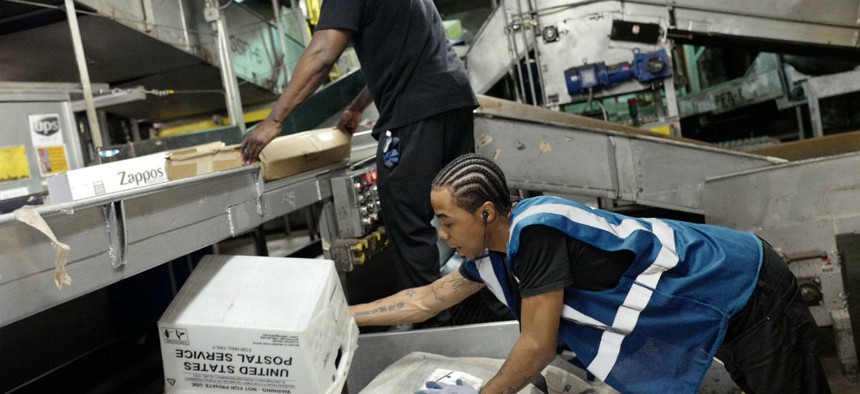Interagency Competition Seeks to Thwart Opioid Trafficking Through the Mail
Four agencies team up to offer $1.55 million in prize money for new tools and technology to solve long-running problem.
The Trump administration announced on Tuesday a new competition with interagency backing to reward private citizens who develop new tools and technologies that help identify illicit opioids trafficked through international mail.
Four agencies are collaborating to implement the competition with $1.55 million in prize money to help the administration solve an increasingly significant problem that has continued to escalate as the opioid crisis has taken hold across the country. The competition follows a reform President Trump signed into law last year that will make it harder for foreign countries to send packages into the United States if they do not provide the U.S. government with advanced electronic information about the shipments. It comes after years of investments by a slew of agencies to tackle the growing use of the mail system to traffic opioids.
The Opioid Detection Challenge is headed by the Homeland Security Department’s Science and Technology Directorate, in collaboration with Customs and Border Protection, the White House’s Office of National Drug Control Policy and the U.S. Postal Inspection Service. Prize money will go to “innovators” who “submit novel plans for rapid, non-intrusive detection tools” that identify illicit opioids coming into the country through international mail.
“The technologies that emerge from this innovation challenge will be important elements of our multi-layered approach to combat the flow of opioids and other dangerous illicit drugs,” said CBP Commissioner Kevin McAleenan.
The Postal Inspection Service called the competition the “first of its kind” and said it would “help identify the next generation of interdiction tools.”
CBP is responsible for inspecting the packages at the U.S. Postal Service’s international mail facilities, though investigations can involve Immigration and Customs Enforcement’s Homeland Security Investigations, the Drug Enforcement Agency, the Postal Inspection Service and other federal offices. The Synthetics Trafficking and Overdose Prevention (STOP) Act that Trump signed last year tasked CBP, USPS and other agencies with collaborating to develop new technology to help customs officers better detect illicit drugs in the mail.
Those officers now primarily rely on canine teams to find packages containing illicit drugs. Front-line personnel also use analytics based on synthesized information gathered throughout the government’s law enforcement community to better identify what to look for when searching for illegal materials. That is coupled with and updated by CBP’s own observations in the field, as officers adjust to the ever-changing practices adopted by drug traffickers.
CBP maintains a presence at international shipping centers operated by both private carriers and the Postal Service. Critics have faulted USPS for attracting traffickers because the agency maintains less rigorous standards than required of private shippers, something the STOP Act attempted to change.
The problem has continued to grow in recent years. CBP estimated last year that its officers inspect just 100 of the 1.3 million inbound international packages that USPS handles every day. Senate Democrats found in a report released last year that individual seizures of fentanyl increased 345 percent from fiscal years 2016 to 2017. The lawmakers concluded that more officers was the primary solution, as CBP had only 400 officers to inspect the more than 600 million packages that come into the country annually.
The agencies participating in the competition called for entrants to submit “well-developed” plans that utilize “automated, user-friendly” technology. The tools must be capable of quickly detecting opioids inside packages without disrupting the flow of mail. Foreign and domestic parties may apply, and face a deadline of April 24.
The administration will select eight finalists, who will split $800,000 allocated for the first phase of the competition. It will then commence a “14-week prototyping accelerator,” culminating in a live test at DHS. The winner will receive an additional $500,000 and the runner-up $250,000.
“Postal inspectors have always made it their mission to protect the public and the U.S. Postal Service from the dangers of illegal narcotics,” said Chief Postal Inspector Gary R. Barksdale. “This challenge and the partnerships involved will provide better mechanisms and technologies to identify and stop the flow of opioids into the country.”




